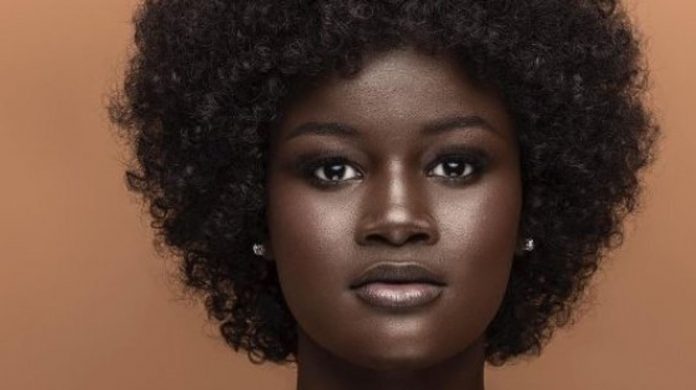She has a skin color that you don’t often see in films, fashion or magazines.
Khoudia Diop, a 19-year-old student and model from Senegal, has a hard time coming up with words to describe it. It’s so dark, she says, it almost seems blue.
It’s what shot her to the social media stratosphere recently. In August, she posed in a photo campaign with black women of all shades for The Colored Girl, a group that challenges society’s beauty standards.
Diop’s pride in her skin has inspired hundreds of thousands of women to follow her on Instagram, where she posts photos of herself using the hashtags #melaninpoppin and #blackgirlmagic.
For The Colored Girl, that’s the big-picture message. “Little black girls need to see that just by being themselves they are equal,” says Victory Jones, who is one of the group’s founders and now Diop’s manager.
And while her skin tone is unusual in the world of modeling, it’s not in Senegal. Marc Shriver, a professor of anthropology at Pennsylvania State University, has measured skin pigmentation around the world. From his research, he’s found that people from Senegal and the islands of Micronesia have some of the darkest skin tones in the world. That’s typical in countries close the equator, where the dark pigment melanin protects against UV damage from the sun’s rays. He suspected that Diop was from Senegal the moment he saw her picture.
Yet even in Senegal, a land of dark hues, some people aspire for lighter tones. According to a 2002 study in the West African Journal of Medicine, the latest data, 52 to 67 percent of the Senegalese population used skin lightening products on their skin. Family members encouraged Diop to try these creams. People made fun of her coloring. But Diop knew from a young age that her skin made her unique.
Diop, a college student majoring in business in New York City, modeled in a fashion exhibit in October, and now she’s working with her agency to find ways to bring dark-skinned girls to the catwalk. We talked to her about skin color, beauty norms and her mission to empower girls. This interview has been edited for length and clarity.
When did you first realize that your skin color was special?
I knew I was a little darker than my friends and family. But I realized that I was really unique when I was in Italy. I was walking on the street and I saw a big mirror. I saw myself among a lot of light-skinned people and I thought, “Wow, my skin is amazing.” Then I understood why people and even modeling scouts stopped me in the street and told me to be a model.
Is that how you got into modeling?
When I was in high school in Paris, some photographers wanted my photos and asked if I was interested in modeling. I wasn’t interested because I wanted to get my education first. I was scared because I didn’t know what I was getting into.
But almost everybody was telling me, why not? So I did it because I wanted to inspire girls. When I was younger I didn’t have any inspiration to like the skin I was in.
Have you met anyone else with your skin tone?
In my family, only my brother has a similar skin color. But in Senegal, the color is common.
Yet some people in Senegal use skin-lightening products.
Everyone there wants to be light. Everyone wants to be whiter. It’s something that they need more education about. They don’t know that being dark is something they don’t need to change.
Did you face any pressure to change your skin color?
Once my cousins in Senegal asked me, “Why do you want to be that dark?” and told me to try skin-lightening creams. I wanted to try it at the time because I felt a little embarrassed being dark, but my sister told me not to, because she said my skin was unique and beautiful.




























